 Originally published April 28, 1995, in Comics Buyer’s Guide #1119
Originally published April 28, 1995, in Comics Buyer’s Guide #1119
We’re taking a break from the “Stupid Instructions” contest for one week in order to devote some column space to Tank Girl. Why? Because considering the pathetic box office performance thus far, it’s a bit of a race as to whether it will still be in theaters when this column comes out in two weeks. Hëll, by the time you read this, it might already be out on video tape.
If I were Dorothy Parker–or even Tweety Bird–I’d probably say something short and reasonably witty, such as: “Tank Girl Tinks.” But this is supposed to be a newspaper about comics, and Tank Girl looks to be one of the three major releases this year based on comic characters (the others being “Judge Dredd” and some film about a guy with pointy ears). So we should really look at it more closely to see precisely why it “tinks” to high heaven, and will most likely tank at the box office.
This is the first comic book-related film I’ve seen where I was, I admit, unfamiliar with the source material. I knew of the existence of the strip by Jamie Hewlett and Alan Martin, but I’d never read it. And I still haven’t, which enables me to judge the movie purely on its own merits. Which would be great if it had some.
That’s an overstatement. I mean, it could have been worse. At least it didn’t have a soundtrack by Queen.
For those (such as myself) who know nothing about Tank Girl, the movie is fairly easy to summarize since we’ve more or less seen it all before (although it’s not, as one of my kids guessed, about a girl wearing a tank top.) Basically, it’s “Mad Maxine” (or, if you prefer, “The Road Warriher.”)
A comet has struck earth, knocking it out of kilter and causing water to become a precious commodity in the year 2033. With action set in Australia, the Department of Water and Power runs everything and is headed by the evil Kesslee as played by Malcolm McDowell (not noticeably different or, for that matter, more interesting than his villain riff in Star Trek: Generations. Geez, do I miss him as H.G. Wells.)
A small group of renegades is holed up in a shack in the middle of nowhere, siphoning off water from the Department. Among them is Rebecca (Lori Petty, so appealing in League of Their Own), the heroine who, despite the title, remains without a vehicle for the first forty five minutes or so of the film (making her job literally a tankless one.) Since the shack is the only structure around for miles, it’s an insanely obvious target, and the DWP zeroes in on it with ease. Nearly everyone is blown away. Under normal circumstances, they would be considered “victims.” Upon reflection, we should actually think of them as “lucky.” They’re out of the film in fifteen minutes, with minimal damage to their respective careers.
Petty is there for the whole shebang. From the annoying voice over narration in the beginning to the nearly incoherent ending, Petty has a ton of screen time. Emily Lloyd was originally cast in the lead, but she bailed shortly before production began. Perhaps it was the words “Final Shooting Script” that prompted her to bolt. Whatever the reason, it was the smartest career move since Kim Basinger opted out of Boxing Helena, and with considerably less legal hassle.
Give Petty credit, though. Her incarnation of Tank Girl is certainly energetic enough. Kind of a cross between Madonna and Cindy Lauper, but nowhere near as annoying. She’s sprightly, aggressive, and fun to watch. Her personality, verve, and sang froid no matter how dire the circumstances make her largely responsible for the film’s best moments, while Tedi Serafian’s screenplay and Rachel Talalay’s direction (and, I assume, the budget) give her little support otherwise.
Resisting Kesslee’s attempts to turn her into La Femme Nikita, Rebecca is tossed down into the worker underground where she encounters Master Blaster (oh, sorry, wrong movie) where she encounters Jet Girl (Naomi Watts who, to provide contrast to Petty, comes across as remarkably dull.) They break out, go to rescue the only survivor from Rebecca’s previous cohorts, ally themselves with the Rippers (kangaroo mutants led by Ice-T, who’s going to spend a long time living this one down) and battle the evil Department of Water and Power to a raggedy conclusion. At which point the film doesn’t end so much as stop (a full and complete stop, to be sure.)
Note that I didn’t indicate spoiler warnings. Why? Because there’s nothing in Tank Girl that hasn’t been done elsewhere and, for the most part, better.
See the post-apocalyptic world that’s a pale imitation of superior films such as A Boy and His Dog or Max Max Beyond Thunderdome (which still remains an awful title, although not as bad a title as The Shawshank Redemption).
Gasp at the evil brainwashing attempts, which will horrify you unless you’ve seen 1984, or even the “Picard’s Naked Butt” episode of Star Trek: The Next Generation.
Thrill as Tank Girl dangles from a tank and later nearly goes over a cliff, unless you thought it was more exciting when you saw it in Indiana Jones and the Last Crusade.
Chuckle at Stan Winston’s prosthetics for the Rippers, which would be great if the creatures had a less ominous-sounding name, and instead went by something more appropriate such as “The Stupid Looking Guys Who Remind Me of John Candy as Barf in Space Balls.” (Although Jeff Kober–Dodger from China Beach–has an endearing, puppy-dog quality to him, even under the ear-lifting make-up.)
Giggle insanely as Tank Girl leads the cast in a non sequitur rendition of Cole Porter’s “Let’s Do It,” which will have you howling unless you saw Jim Carrey and company perform “Cuban Pete” in The Mask (or, for that matter, Gene Wilder and Peter Boyle singing and dancing their way through “Puttin’ on the Ritz” in Young Frankenstein.)
Although I suppose we should give Tank Girl some brownie points for audacity. Here’s a room crammed with about fifty people, and when Tank Girl (for no discernable reason) insists that they sing a one-hundred-year old pop tune (it’s 2033, remember), they know all the words. If you think that’s no big deal, you try singing the song beyond “Birds do it, bees do it, even educated fleas do it, let’s do it, let’s fall in love.”
Not only that, but when the vocalizing reaches the outraged ears of an official, he demands, “What is that?!” and his subordinate unhesitatingly replies, “It sounds like Cole Porter to me, sir.”
But the most significant and most ominous carryover from other films is the decision to underscore the comic book origins of the property with opening credits and smash cuts featuring comic book art. Whenever a movie does this, it’s a sign of disaster in the making. Comic book art was a major feature in the credits and/or body of The Return of Swamp Thing, Brenda Starr and Flash Gordon.
Tank Girl chooses to go to even greater lengths. Not enough that the artwork festoons the opening credits. It’s all through the film. Sometimes it stoops to cutesy word balloons such as “This is me unconscious.” And at other points it literally becomes the movie. Animated sequences (nicely done, mind you) serve as transition shots, establishing shots, even entire action sequences.
This might very well have been a deliberate decision on Talalay’s part because she thought it added something. But it comes across as if the budget ran low, and it was decided that animation was a cheaper way to do things than matte drawings, more miniatures, and complex action stuff. Either that, or they were toying with the idea of doing Tank Girl as an animated feature, saw some test footage, and decided to go live action. Which is a shame, because there’s a tremendous amount of quirky energy in the animation, and one quickly comes to the conclusion that Tank Girl might have worked better as a cartoon.
Every time a film maker drives home to the audience that the character’s previous incarnation was in a comic book, it guarantees disaster.
The problem is that comic books–for all the advances and Pulitzers and such–are still perceived as being flat, one dimensional, insubstantial, goofy lightweight fare. And when you produce a film that says, “Hey, look, it’s a comic book on film!” you’re sending a message to the audience to lower its expectations. And that message is, “Don’t take it too seriously. It’s only a comic book.”
But an audience has to take it seriously, particularly if the aim is to produce something in an action genre. By tossing in pin-ups and animated sequences, the movie yanks the viewer out of the action and reminds the audience that, ultimately, Lori Petty is simply the physical incarnation of someone on a printed page. Comic books have their own “reality.” Movies have theirs. Once you start to mix the two, you have a mishmash. In Silence of the Lambs they don’t keep having cutaways to close-ups of the Thomas Harris novel. So why keep yanking us out of Tank Girl and into its original venue?
The result is that the audience is too easily, and frequently, reminded that Tank Girl herself is “just” a character.
Storytelling, ultimately, is nothing more than an illusion. Characters spring from writer’s heads, but the characters aren’t real. They’re just figments of imagination. The writer, God-like, tries to breathe life into the character. It’s impossible. Life is for living beings. One can only instill an illusion of life. The measure of the core quality of a writer is how good an illusionist the writer is. If a writer is a truly great magician, the character can outlive his originator and take on a life of his own (witness Sherlock Holmes, Tarzan, and Mickey Mouse, just to name a few.) The power of belief is so remarkable, that we can bestow the unliving with immortality that can never be granted to their creators (although I’m reminded of the Woody Allen comment, “I don’t want to achieve immortality through my writing. I want to achieve immortality by not dying.”)
That’s what suspension of disbelief is all about. On the printed page, you have to convince the reader to invest something of himself in the lives of the characters because, ultimately, they’re just words on a page. If I were struck deaf, dumb and blind, I’d still have a physical presence. But if the words evaporated from a book, the characters would cease to exist.
And in a movie, the demands are even greater. The movie maker has to convince the viewer to overlook the fact that these are actors, flickering in images of light, and believe instead that these are “real” people involved in “real” drama. That what is happening in the here and now actually matters. That a character might die so effectively that the audience won’t give any thought to the reality that somewhere, months before, the director yelled “Cut” and the actor or actress got up and dusted themselves off.
Comics are a “right” way to create characters and tell a story. So are movies. Take two rights, stitch them together, and you’ve got a wrong.
Ultimately, the reason Tank Girl is getting shelled is that it appeals to no single audience. Speaking in sweeping generalizations: Men will be turned off by an action film with a female protagonist. Women will be turned off because there’s no real relationships in it (they’re either too truncated or too ludicrous). Parents will be turned off by the “R” rating. Boys will want to see Tommy Boy. Girls will want to see Tall Tales or the rerelease of Forrest Gump. The soundtrack might garner some interest from the music crowd (look what it did for The Bodyguard), but word of mouth is down the chute and they can just buy the CD.
Who’s left? Comic book fans. Hard core comic book fans. All several hundred thousand of us. As of this writing, with the film debuting at Number 10 and taking in about $2 million–if we go on average of about $5 a ticket (which is probably low. Then again, I paid $3.50) that would come out to about 400,000 people.
Sounds about right.
Tanks for the memories.
(Peter David, writer of stuff, can be written to at Second Age, Inc., PO Box 239, Bayport, NY 11705. He regrets that he will not be able to attend either Pro/Con or WonderCon this year due to both family and professional commitments. He hopes everyone has a great time and hopes to see you all next year.)
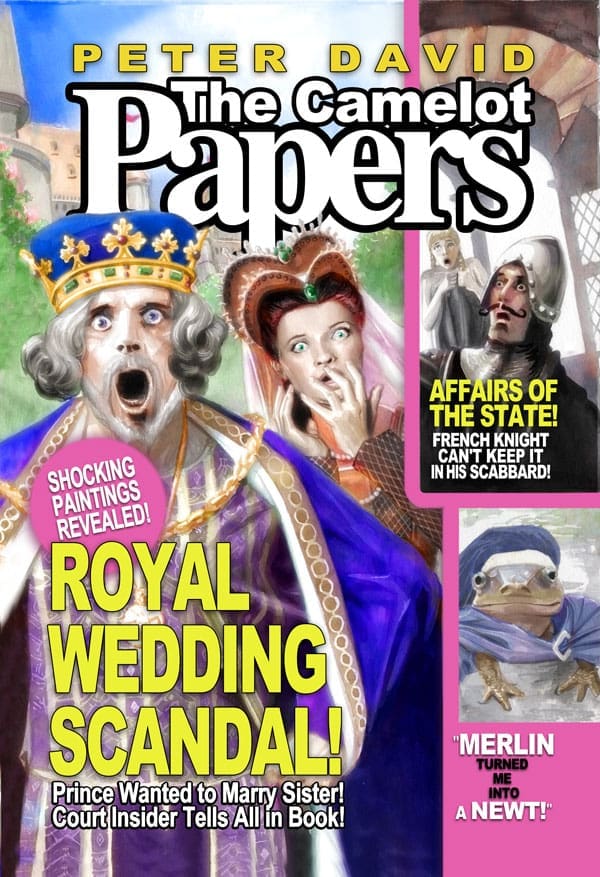
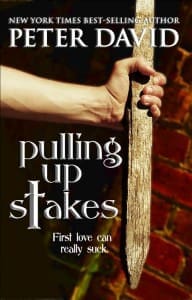
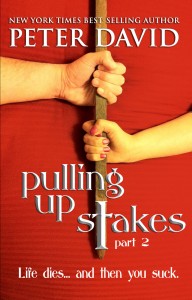
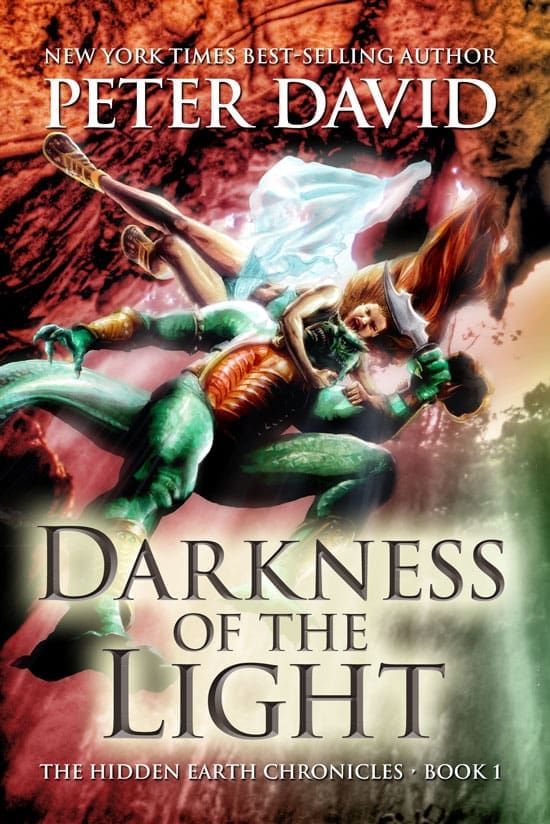
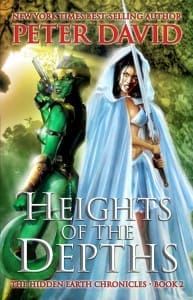
Didn’t want to see it.
.
Didn’t see it.
.
Still haven’t seen it.
.
Will never see it.
.
Looked at the comic occasionally.
.
Never read a complete issue.
.
Likely never will.
.
I think i’ve seen that there’s been a new version of the comic.
.
Will never read that.
Wanted to it.
.
Saw it twice in the theater.
.
Have seen it a couple of times since.
.
Own the collections of the original comics.
.
Even read the ones from DC Vertigo.
.
Not really into the new version of the comic, though.
.
But I still listen to the soundtrack pretty often.
I will make one update to this: Over the years, my stance on “Flash Gordon” has softened somewhat. I was appalled when I saw it in the theater, but I’ve seen it on cable enough times that I can appreciate the camp value and even the Queen soundtrack (which I still think isn’t their best work, but at least it’s catchy.)
.
PAD
Glad to hear you say that, it’s pretty much my take as well. Flash has held up far better than some of the movies of my youth (I find The Goonies unwatchable now). A double feature of Flash Gordon and Suspiria will have you seeing multi-colored spots on the walls for days afterward. Oh technicolor, how I miss you.
.
Funny also how The Shawshank Redemption doesn’t sound like such a bad title now. I just want to know who the marketing whiz was who came up with Romancing The Stone.
PAD: Geez, do I miss him as H.G. Wells.
.
Yeah, great movie, eh? Nicholas Meyer at his pre-Wrath of Kahn greatness.
.
That being said, I thorougly enjoyed Tank Girl. For exactly two reasons:
.
a) The date I went to see it with enjoyed it and she was hot.
.
b) I was inebriated.
.
Haven’t seen it since, but good memories.
.
re: Flash Gordon. Ugh. I still don’t like it. The only thing I get a chuckle out of it is that Blackberry is using the theme song to promote their tablet.
.
TAC
As an aside: the first thing I ever saw Malcolm McDowell in was Time After Time, as H.G. Wells. I loved the movie, but then got very confused when people said he was going to play Caligula. Mousy little Herbert, Caligula? No way.
.
Then I happened to catch A Clockwork Orange … and it all made sense.
.
Good actor, good films.
.
And count me in the “Flash Gordon is great campy fun” group. Brian Blessed alone is worth the price of the scenery he chewed.
I’ve seen parts of Tank Girl – can’t seem to stay awake for the whole thing. I must admit, however, to a certain degree of curiosity as to exactly how stoned Ice-T was at the point when his agent managed to convince him that playing a heroic mutant kangaroo would be a great lateral career move for him…
I love Flash Gordon. Loved it as a kid and still love it. Love the soundtrack, too (and I don’t even really like Queen).
I love Flash Gordon as well. I mean REALLY love it. Like “one of my top 5 movies of all times” love it. Ornella Muti (who played Princess Aura) was my first childhood crush. Still get a little wiggle any time I see her…
So, PAD, what did you think of the (animated) origin of O-Ren Ishi in
Kill Bill, Vol 1? I loved it, and thought that the sequence didn’t
pull me out of the film at all. I worked from a style perspective, and
I later realized that it also worked from a “These scenes get an NC-17
if you have real actors in them” perscpective.
So, PAD, what did you think of the (animated) origin of O-Ren Ishi in Kill Bill, Vol 1? I loved it, and thought that the sequence didn’t pull me out of the film at all. I worked from a style perspective, and I later realized that it also worked from a “These scenes get an NC-17 if you have real actors in them” perscpective.
That didn’t bother me because it was a carefully chosen stylistic choice for one specific sequence. It was an acknowledgment of the manga roots of the story material and because of when and where it was used, it was quite effective. It didn’t come across (as it did with “Tank Girl”) as a substitution for a sequence that would have been too expensive to film with live action. Nor was it cloying or cutsie. Although you’re also likely right; the sequence could have tipped the movie into NC-17 had it been live action. At least at the time. By today’s standards, it wasn’t much worse than Hit-Girl in action in “Kick-Úš.”
.
PAD
I remember having an argument with my roommate regarding that scene. He contended, “… then it became a cartoon for no reason and after a while, without warning, changed back to live action.”
.
I pointed out to him that it was animated while the story was in Japan. Just like it was a western while the story was in the American West. Just like it wasa kung-fu action movie in China. The style altered to fit the setting.
.
Of course, I also realized that this is the same guy who was upset that Tarrantino didn’t explain how John Travolta’s character “came back from the dead” in Pulp Fiction. So, I didn’t argue too much.
.
Theno
So, PAD, what did you think of the (animated) origin of O-Ren Ishi in Kill Bill, Vol 1?
I loved it, and thought that the sequence didn’t pull me out of the film at all. It worked from a style perspective, and I later realized that it also worked from a “These scenes get an NC-17 if you have real actors in them” perscpective.
I’m still waiting for a Queen FLASH GORDON soundtrack that isn’t marred by a bunch of movie dialogue snippets.
Not that I didn’t like the movie mind you — I would just like a “pure” soundtrack. ‘Twas awesome.)
So, PAD, what did you think of the (animated) origin of O-Ren Ishi in Kill Bill, Vol 1?
I loved it, and thought that the sequence didn’t pull me out of the film at all. It worked from a style perspective, and I later realized that it also worked from a “These scenes get an NC-17 if you have real actors in them” perscpective.
The whole in-your-face, “This is a COMIC, SEE?!” editing is precisely the reason I hated the first Hulk movie. Didn’t use comic art, but the constant on-screen panels and strange cut-away segues completely distracted me and prevented me from focusing on anything else for the duration. And as for z comic art intro being an omen of lousy cinema quality in general . . . well, Ultraviolet anyone?
I think the only time I’ve ever seen that technique NOT preface a gawd-awful movie was the intro to Spider-Man 2, using pulp art as a recap of the previous movie.
I liked it in Creepshow but I’m sure the technique put a lot of people off.
Huh. Forgot about that. Nah, it was fine there. Though, if I recall, they pretty much did a word-for-word adaptation in that one.
.
From what I’ve seen of Tank Girl, the use of the technique in the two films doesn’t really compare. The comic book art scenes in the Creepshow films was use as introductions and wrap ups for the different stories. The use didn’t really seem odd or break the flow because it wasn’t really in the stories. The few times I’ve channel surfed into Tank Girl, the scenes seemed to pop up as a gimmick at random points. It’s not every transition from scene to scene, but there seems to be no rhyme or reason to which ones were picked. It also seems kind of random at times as to which scene will suddenly get word balloons or animation in the place of live action.
.
Granted, it may seem random to me since I’ve never actually seen it from start to finish (or all of it for that matter,) but it really isn’t much like the use in Creepshow.
yeah, I was more comparing Creepshow to the Hulk, though, obviously, Creepshow was way more obvious in its use of panels and other comic book aesthetics.
.
(Not entirely sure if that statemen is accurate but I so seldom get to use the word “aesthetics”. Especially this time of year when school is winding down and I have to keep my word on “things we will do this semester”, which leads to sentences like “Stand back, you think thermite is some kind of joke?”, “I said, stand back!” and “Oh sure, NOW you’re sorry…which way to the burn ward?”)
.
Somehow I completely missed that. My brain was on low power last night. Well, that and I put the first Hulk movie out of my memory as soon as it ended. Even now, if pushed to remember it, all I can tell you was that the end really blew and that I spent a lot of the movie wondering where Hollywood hid the charismatic and talented actor that I saw years early in “Chopper” and wondering who in the hëll this bland guy that they have pretending to be him was.
Showing what will be obvious then is no longer obvious now, I had to use IMDB to figure out that “some film about a guy with pointy ears” was referring to Batman Forever.
.
All through reading the article, I kept going back to it, thinking “Spock? He doesn’t count as a comic book character…Namor didn’t get a movie…It’s too early for Lord of the Rings, not that that’s comics either…”
Yep, that one had me a little confused too
The only reason I realized that so quickly is because I remember writing reviews for both Dredd and Bats Forever in a student newspaper, ergo they came out the same year.
I don’t know if it made it into the closing credits, but the soundtrack to TANK GIRL does have a fantastic cover of “Let’s Do It” by Joan Jett and Paul Westerberg.
Whether that’s the sole good point of the whole production, I leave it up to the folks who’ve seen it to decide.
I love you, Peter. I love your writing. I even saw Oblivion and Oblivion 2.
BUT.
I have to disagree. Tank Girl was an outrageous fun romp. The music was fun and great. I fell in love a little with Lori Petty. Stan Winston’s effects were pretty dámņ good. The plot was a bizarre little punk fantasy.
Yes, it took her too long to end up in a tank but they were telling an origin story and you know those tend to be a slower build. Yes, fans of the comic didn’t really care for it and fans of the movie tend to not care about the comic.
And that is the biggest weakness of the movie. Comic book movies should be reflective of their original properties and cause people to look into the comics. It should be something that fans of the comics want to see as an extension of the original. Unfortunately this didn’t happen. The movie and the comic were such completely different animals that it failed to find a fanbase.
But, as for me, I have it on my cell phone and watch it at least once every few weeks.
Man Naomi Watts had done a LOT of crappy movies before she broke big with “Mulholland Drive”! I think she was also in a “Children of The Corn” sequel too. She did look cute as a brunette with glasses as Jet Girl.
I originally agreed with PAD a hundred percent about Tank Girl.
Then I read the comic.
The film actually captured the manic and disconnected atmosphere of the funnybook.
Mind you, that doesn’t make for a great movie. But having read the comic, I now understand what they were going for.
If only they’d forced every member of the audience back then to read the comic…
Tank Girl is on my list of noble failures.
That’s how I felt about Judge Dredd. I first saw it before reading any of the comics and thought that it was pretty darn bad. After reading the early Dredd comics I realized that it did hit the mood well, a grim and serious idea about society going too far wrapped up in a significant amount of silliness. He had a housekeeper robot with a speech impediment, after all, Wobbie the Wobot, that makes Rob Schneider look good in comparrison.
Oops, forgot to say that I’m now a fan of the Dredd movie, and often find myself defending it against Dredd comic fans that seem to be reading different Dredd comics than I read.
Judge Dredd does not remove his helmet.
.
Judges may not have romantic relationships of any kind.
.
The humor was too “Hollywood action one-liners” and not enough “Fallout” like the comics.
.
Barring those points (which I do feel were important), I don’t hate the movie like most do. It’s not nearly as good as it could have been, but it’s no Catwoman or Batman & Robin, by far. I can watch it. And I love the ABC Warrior.
Yep, Jay, those are definitely the major problems with it and significantly against the character, but my argument pretty much comes down to “hey, it was closer than almost any other comic book movies at that time.” Not the best praise, but, meh. Hoping the new film comes through and does a better job.
I dunno, I always thought ‘Tank Girl’ was a parody of the sheer silliness of post-apocalyptic movies where the reasons for civilization collapsing are always stupid, the society as we see it never makes sense, and characters remember only what’s convenient to the plot of the World Gone By. Why not have armored kangaroos, struggles for water, and everyone singing Cole Porter? It’s not that much crazier than ‘Mad Max: Beyond Thunderdome’. The movie is intended to be absurdist; if you watch it with any kind of expectation of real-world logic, you’re going to be disappointed.
.
(And as an aside, I remember reading PAD’s comments about everyone knowing the words to “Let’s Do It”, and being unable to stop myself from picturing him watching ‘The Great Muppet Caper’ and being absolutely infuriated that nobody, absolutely nobody, could tell Kermit and Fozzie apart without the hat.)
For me, TANK GIRL was most memorable for its most disgusting moment (which was rightly taken to task in a letter, or perhaps it was a column, in CBG at the time): when Jet Girl (Naomi Watts) demonstrates what a Strong, Empowered Woman she’s become by casually, cold-bloodedly murdering a co-worker who had previously subjected her to unwanted sexual advances. The murder couldn’t even be justified on the basis of his having brutalized or raped her. He sexually harassed her — and for that, the moviemakers told us, he deserved to die like a dog: He’s standing there unarmed in front of Jet Girl (so it wasn’t a case of self-defense, either), she tosses off a cute quip and puts a bullet between his eyes, he keels over dead, and we’re supposed to cheer. Sickening.